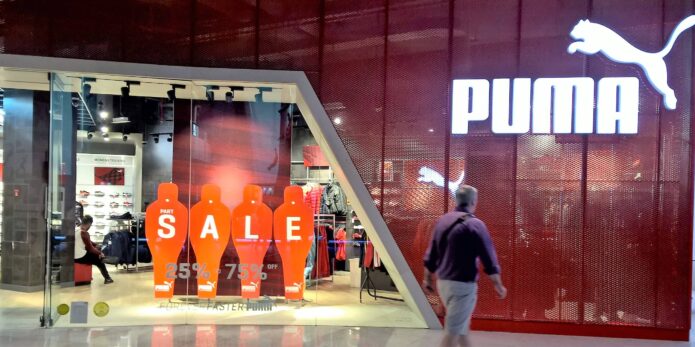Most brands use partners to grow their brand internationally. We provide 10 key success factors to grow it successfully.
Brand distribution is in its ‘direct to consumer’ era, with most investments going into own stores and own online distribution. Still, wholesale and especially partner retail continue to be vital and often commercially more successful.
But partner retail does not come without growth challenges. If you think the biggest risk in partner distribution is partners doing a poor job of representing your brand at point of sale, think again.
Brands Need to Professionalise Partner Distribution
New Balance may have thought so too before its partner retailer in Spain and Portugal filed bankruptcy. The financial write-down is likely not the biggest damage yet. New Balance had to choose between the plague and cholera – take over their partner’s poorly selected and managed retail locations or start all over with brand retailing in Spain and Portugal, losing out on three to five years of monobrand store sales in the region.
If you are familiar with financial reports of global brands, you know this is just one of many cases where poor partner management turned out very costly. Many brands operate more than 500 partner stores globally, but spend regularly spend more time on finding new partners rather than on nurturing existing partnerships.
By nature, partner retailers are customers of the wholesale division, and as such they often get the same treatment as all other wholesale/multi-brand customers. If a brand has a global or regional specialized partner management team at all, it’s often left to fight a lonely battle for quality growth. Country managers tend to protect ‘their’ local partners of choice, with little space for quality guidance in partner retail.

Geox Store (Photo: Brand Pilots)
As a result, many partner contracts do not give brands access to the actual performance of the partner and their stores. In brand distribution, partner managers are often toothless tigers, and qualitative brand growth happens only where brand distributors are strong at developing the brand in their own ways.
Over the years I made the observation, the stronger a brand and its products, the less it tends to invest in partner management. Partner retail guidance is reduced to a mystery shopping study and an annual executive meeting. At best, they receive special key account treatment. But all to often that has just a small impact on the qualitative development of the partner retail stores.
Partnership Management is a Must
Over the past 20 years, I’ve worked with a number of brands to improve and professionalise their partner retail business, turning hands-on partner store businesses into holistic partner distribution programmes. We helped finding professional partners, developed partner processes, tools and structures, while doubling the original partner growth plans.
The following list of 10 key success factors in selecting and managing distribution partnerships is based on that experience.
10 Tips for Excellence in Brand Partner Management
| 1 | Avoid Speed Dating | Put quality into a proper selection process, refrain from commitments when under sales pressure |
| 2 | Opt for performance, rather than friendship | Performance doesn't grow among friends. Quality partnerships need a climate of joint growth aspiration and arguments at times |
| 3 | Four eyes & experience only | Pass partner selection to cross function executive teams, with competence to judge entrepreneurs |
| 4 | Management competence over brand love | Distributors may be the biggest fan of your brand, but make 'growing brands successfully' your no. 1 selection criteria |
| 5 | Don't trust fancy Powerpoint visions | Question dynamic Powerpoint growth promises. Insist on joint business plans to understand realistic growth perspectives |
| 6 | Plan for twice the need | Establish the principle of 200% expansion plans. Only this allows you to turn down poor locations and stay calm if the new location pipeline dries out. |
| 7 | Align agendas | Your partners top strategic priority is growing sales or filling shopping centres. Your goal is growing a brand, so balance strategic conflicts |
| 8 | Trust comes with transparency | Share store P&Ls, retail KPIs & benchmarks. Agree on open books from the beginning |
| 9 | Senior expertise only | Recruit executives for partner management, it is a big strategic task to manage distributors |
| 10 | Invest in the marriage | It is easy to look for new partners, but better to invest 50% of resources in growing existing partnerships, in quality and L4L |
If the majority of time goes into finding new partners instead of growing existing partnerships, how can we expect to cultivate a mutually rewarding partnership? Annual arguments about on-time delivery, late payments or larger discounts are all too often the only communication between a brand and its key distributors. When your partnership is reduced to money issues and late-for-dinner discussions, it won’t grow and flourish. Managing business partnerships is no different from maintaining a relationship: without investments in wellbeing, quality of life suffers for both you and your partner.
What Next? Energise Partner Distribution!
Are you creating greatly improved results for you and your partners this year? Whether you look at your partner distribution in Asia or your partner store in Milan – if it’s not working for you or for your partner, you need to take measures by working on your partner management.
If you are a CEO or CSO, don’t blame your partner or partner managers!
Partner growth is a top-level strategic task. ‘Managing’ partners that operate outside your direct reporting lines calls for executive leadership. Don’t leave partner management to small teams and small budgets.
If you are a partner manager, don’t blame your CEO or country manager!
Raise your brand’s awareness of development potentials and benchmark your partnership programme. A current and low-key approach holds tremendous potential for you and your brand. Sell opportunities you see to the board, moving from a state of mere partner administration to excellence in partnership management.
About the Author:
Whether assisting a US brand group in developing its European partner distribution strategy, or designing and building a partner organisation for a global toy brand, Guido is a big fan of managing qualitative growth. With his background as a retail and finance professional, he strongly believes that partner distribution is the most challenging, but also the most rewarding brand growth strategy. If you want to benefit from Guido’s experience, get personal advice, or just exchange some thoughts, feel free to reach out via e-mail or read more from him here.


